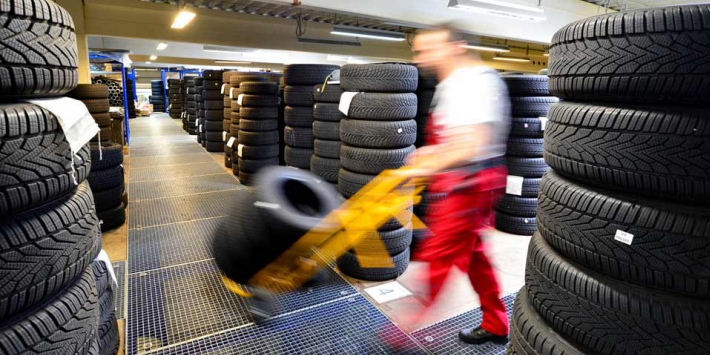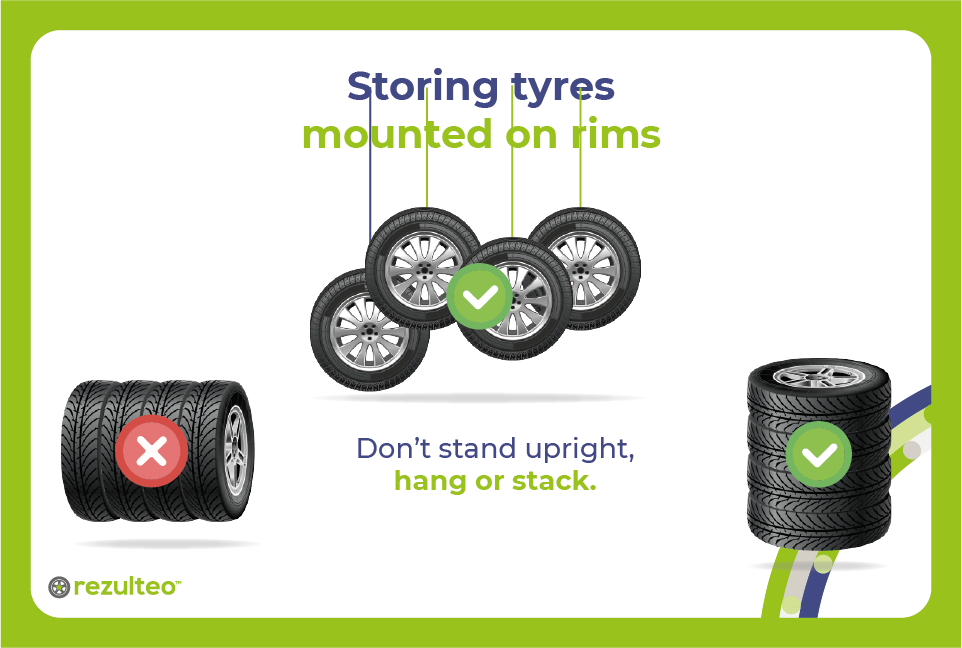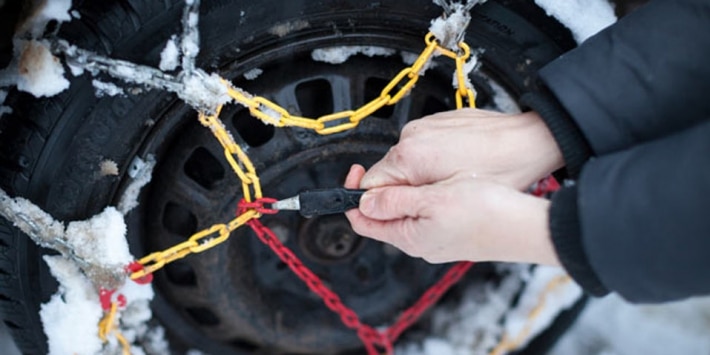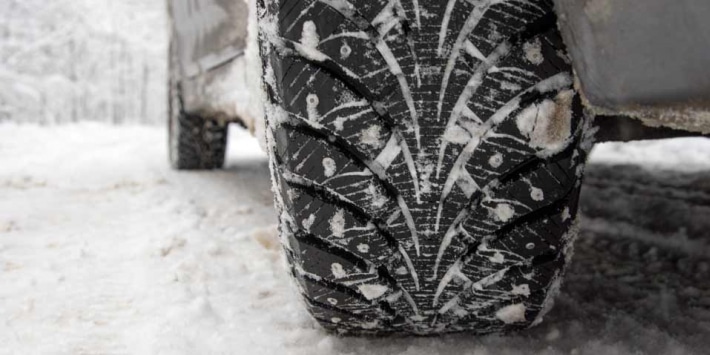An important question to consider when switching from summer to winter tyres or vice versa, is what to do with the extra set of tyres that you won’t need until next season? We tell you about the different storage options and good practices to store your tyres properly and prevent them from getting damaged.

What are the risks for your tyres while in storage?
Your tyres age even when you don’t use them. If not stored properly, their service life could be significantly reduced.
The tyre tread compound is sensitive to humidity, direct light, atmospheric conditions and ambient temperatures, and may oxidise, forming cracks on the surface of the tyre.
Also, if they are not stored properly, your tyres may become deformed which could prevent you from fitting them on your vehicle next season.
How to store tyres
To store winter or summer tyres properly and avoid damaging them, you just need to follow these 4 rules:
1. Note the position of the tyres when you remove them
To extend the life of your tyres, we recommend you rotate them regularly. This is because tread wear is not completely even: on a front wheel drive vehicle for example, the front tyres tend to wear more quickly than the rear tyres.
In preparation for rotating your tyres at the beginning of the next season, it’s a good idea to note their position on your vehicle when you remove them. For example, write “FL” in chalk on the sidewall of the front left tyre, “FR” on the front right tyre, etc.
Find out more about the rules for tyre rotation
2. Clean your tyres before storing them
Before storing them for the season, it’s advisable to make sure your tyres are clean: remove earth, gravel or any other debris from the grooves, then check they are dry to prevent corrosion.
3. Choose a suitable storage area
To avoid damaging the rubber, tyres must be stored in a closed, dry, well ventilated area at a temperature between 10 and 25°C, away from direct sunlight, bad weather conditions and any chemical substances (solvents, hydrocarbons, oil…). For optimum protection, you can use protective covers or opaque plastic bags, removing the air before closing them.
Never store tyres outside, even under a shelter: the surface of the tyre will harden and cracks could appear due to air pollution, ozone, UV rays or even large temperature and humidity variations.
Also, avoid storing your tyres near a heat source or any electrical device with a motor that produces ozone (e.g. battery charger, welder, etc).
4. Comply with the best storage method for your tyres
The storage method for tyres differs depending on whether they are mounted on rims or stored without rims.
- Storing tyres mounted on rims
Do not store them standing up, hang them or stack them up

- Storing tyres without rims
Do not hang or stack them, but store them standing up and turn them a little once a month to vary the pressure points.
Tyre storage services, to make life simpler!
If you don’t have a suitable area to store your tyres, or you simply don’t have enough room, you can use a tyre storage service or ‘tyre hotel’. Leaving your tyres with a specialist guarantees ideal storage conditions, plus you avoid all the heavy and potentially dirty work of shifting tyres!
How does it work? It’s simple: you leave your tyres or wheels with tyres in the centre of your choice, sign a storage contract and make an appointment to fit them the following season.
| Examples of retailers offering a tyre storage service: ATS Euromaster: from £7.50 per tyre per season when you purchase or re-fit the new season tyres. Kwik Fit (contact for more details). |




